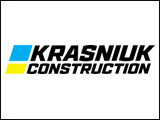New methods being developed by the University of Manitoba for analyzing the jet stream produced by needle-free injectors are expected to assist manufacturers in improving the devices.
Needle-free injectors use pressurized gas to drive veterinary compounds through the skin into the subcutaneous layer or into the muscle of the animal.
Researchers with the University of Manitoba in partnership with AcuShot Inc. are using high-speed photography to track the dispersion of liquids injected into different mediums, including various kinds of ballistic gels and commercial foams, with needle-free injectors.
Dr. Jason Morrison, an assistant professor in the Department of Biosystems Engineering, says researchers will track where the fluid goes once it’s been injected and what the distribution of the stream looks like in tissue.
Needle-free injection devices are a lot like what you saw in Star Trek where a device is held up against the skin of an animal and it injects a stream of fluid rapidly into the skin, sometimes deep into the skin or into the muscle or just barely below the surface.
The biggest benefit in terms of veterinary devices, which is what we’re primarily looking at, is that repetitive injections from animal to animal no longer involve a needle so there’s less chance of a needle breaking off in the animal and there’s less chance of transfer from the animal to the caregiver where a needle might prick a caregiver after it’s been in an animal.
Dr. Morrison says the goal of the project is to identify the best testing mediums for assessing modifications made to needle-free injectors.
He hopes the work will result in additional collaborations with AcuShot aimed at making improvements that will allow the delivery of a wider range of medications and supplements through the use of these devices.
Source: Farmscape.Ca



